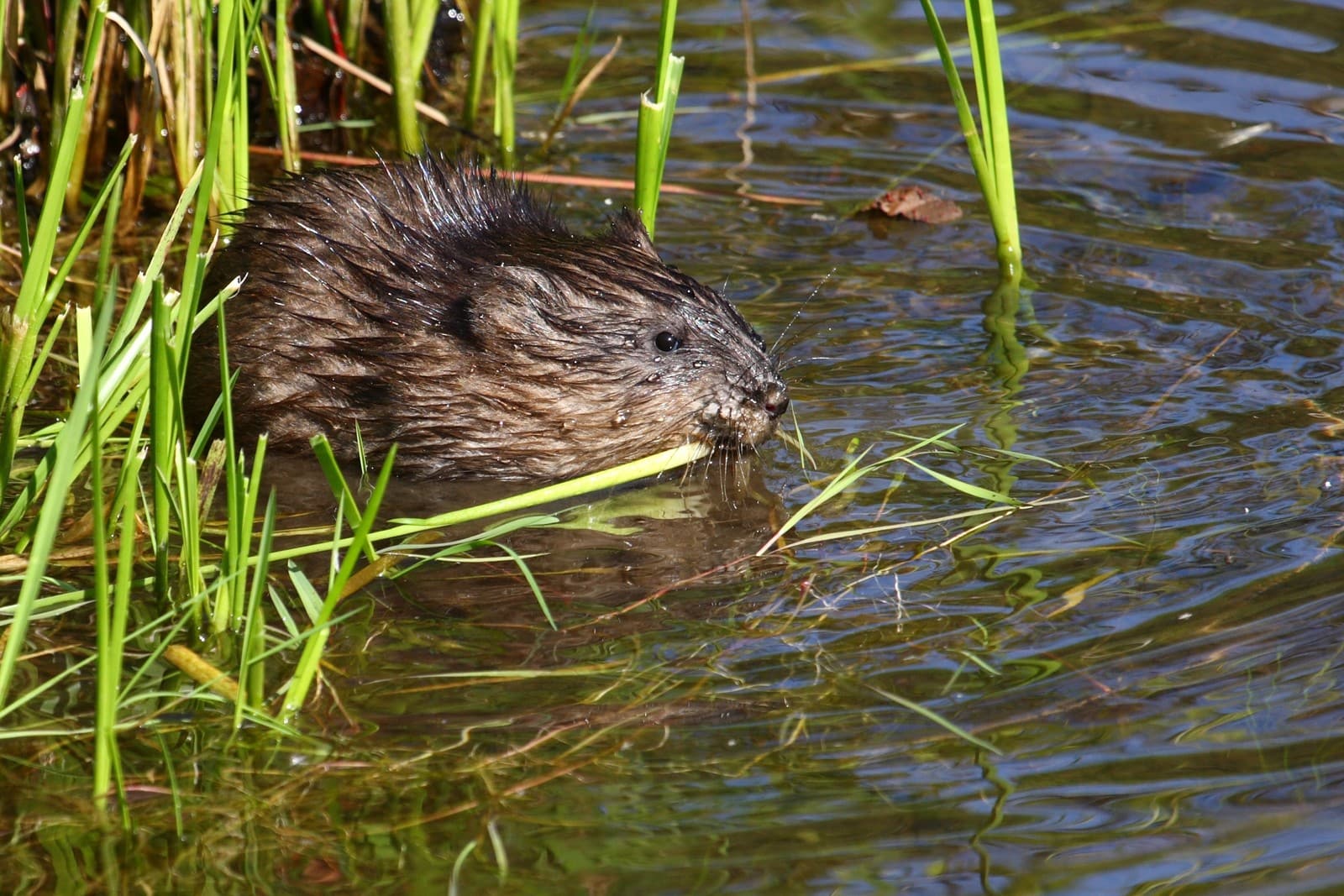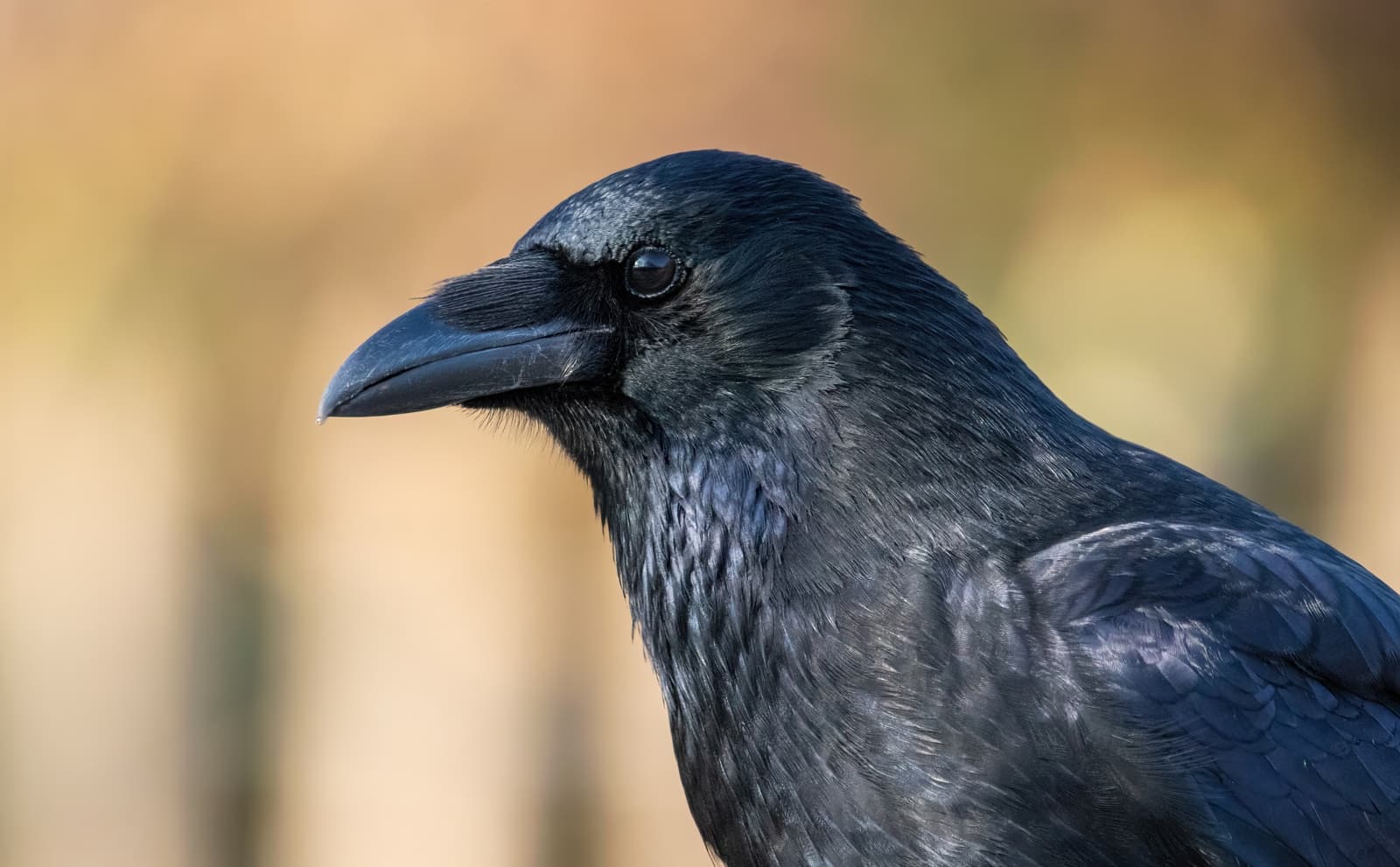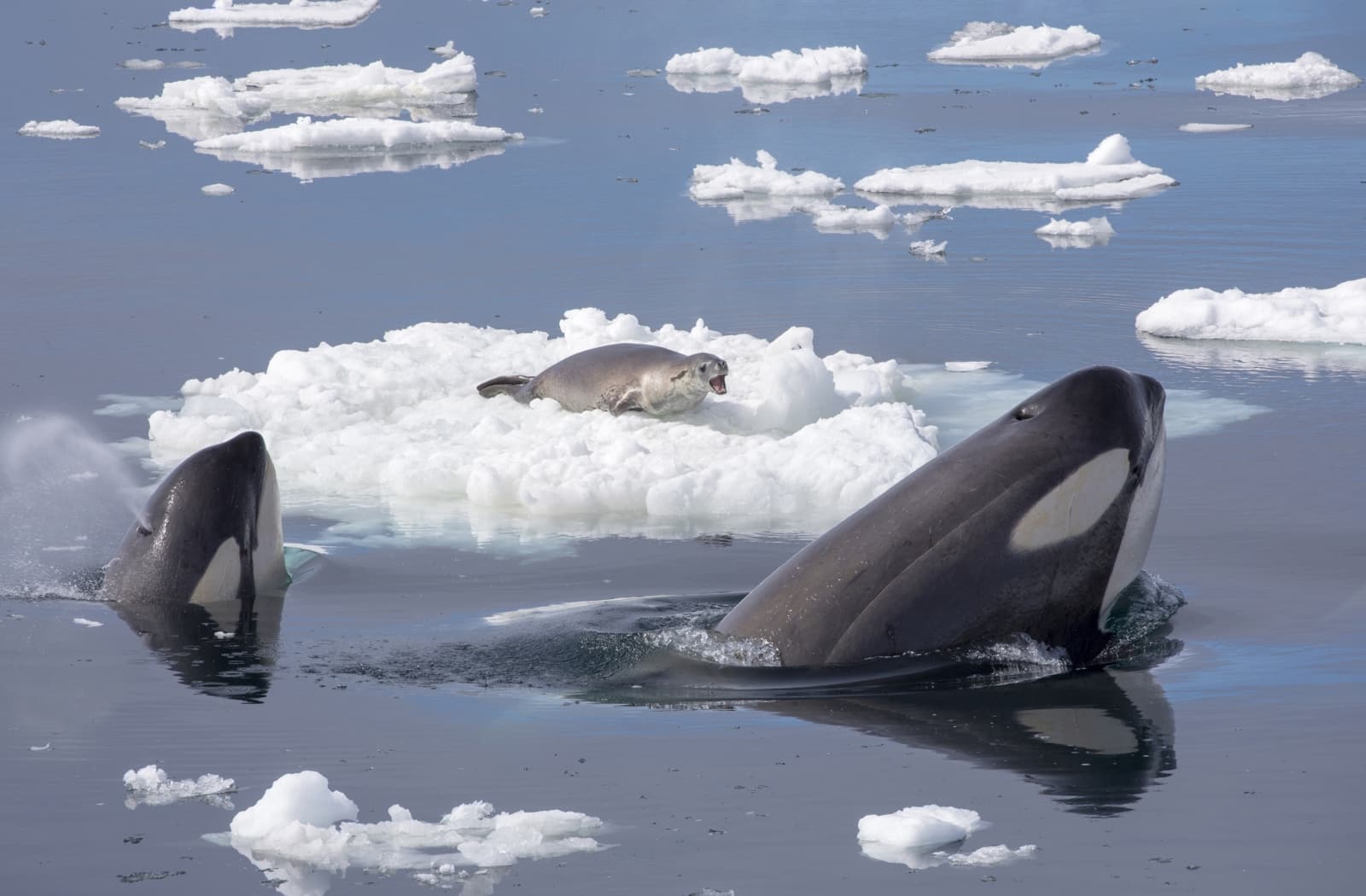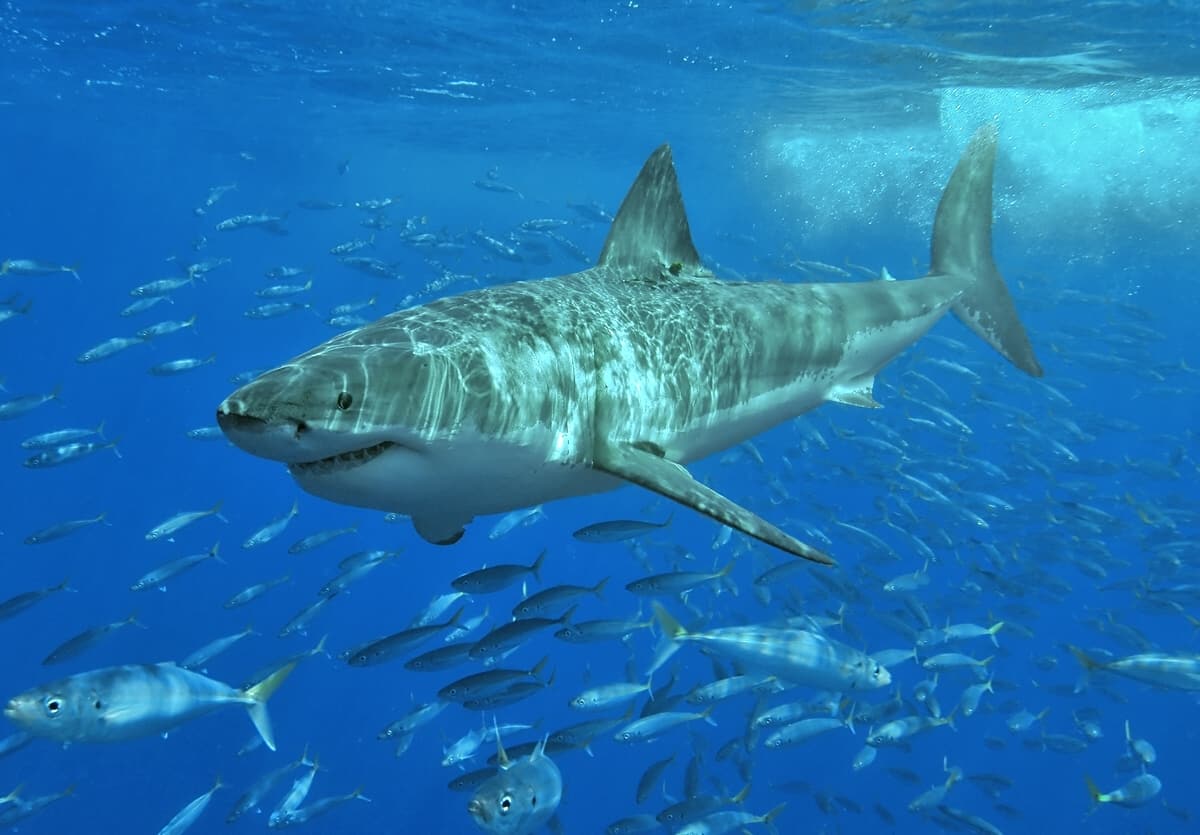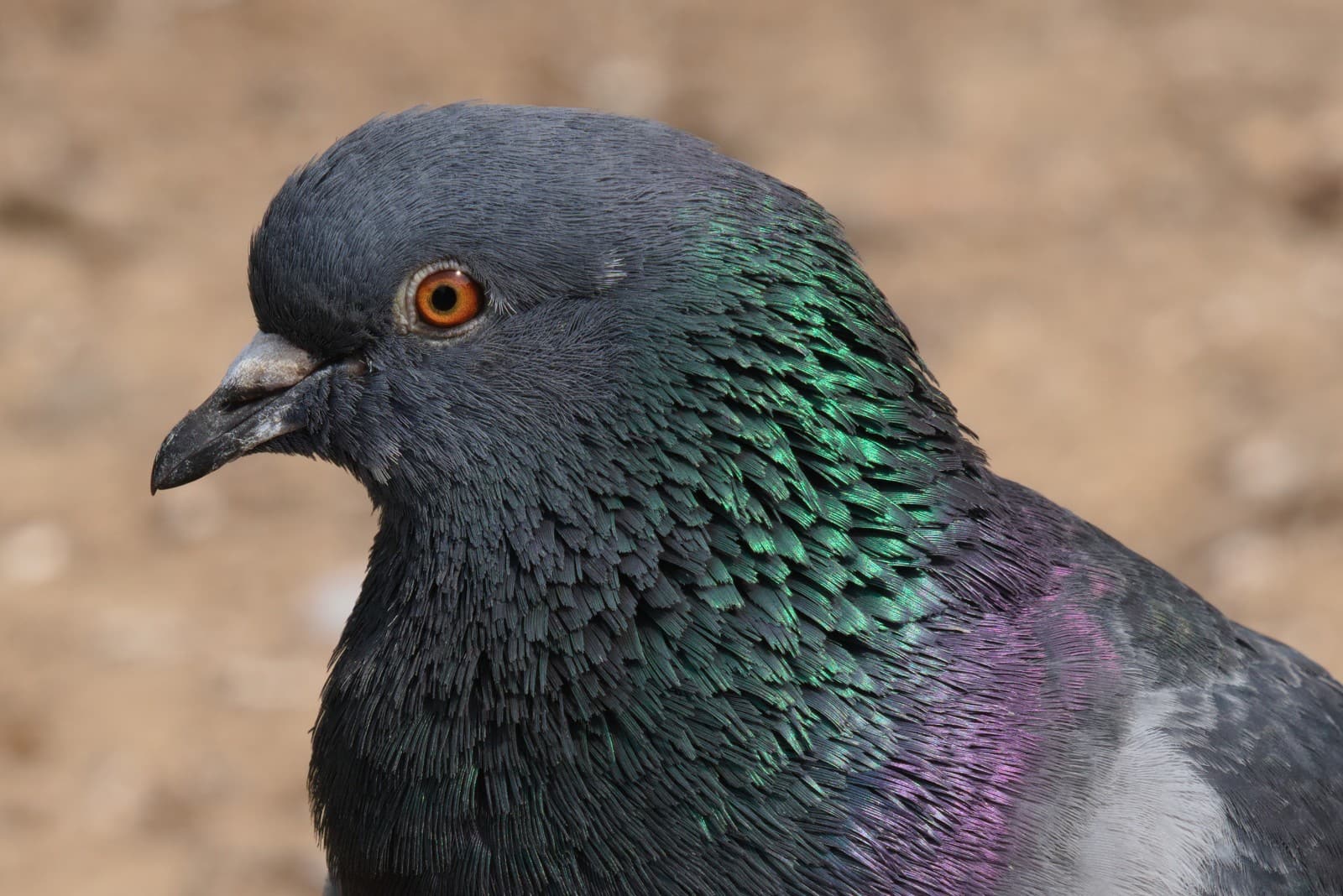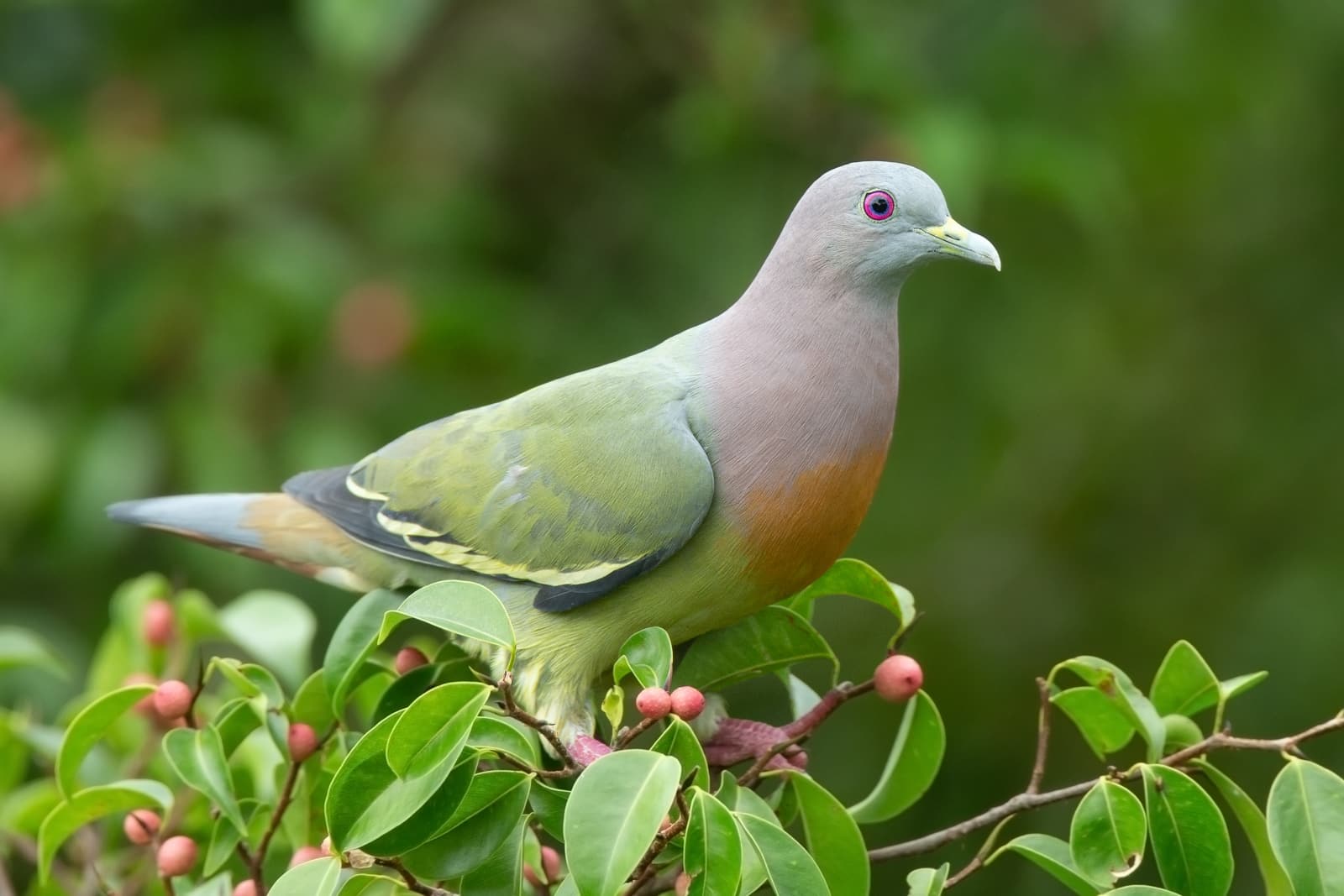Flounder vs Halibut: A Complete Comparison
When comparing flounder vs halibut, size is often the most striking difference. Halibut reign as the largest of all flatfish, with Pacific halibut reaching lengths of up to 8 feet (2.4 meters) and weights exceeding 500 pounds (227 kg). Flounders, by comparison, typically max out at 2-3 feet (60-90 cm) and rarely exceed 20 pounds (9 kg).
These remarkable flatfish species, while similar in appearance, differ significantly in habitat preference, feeding behavior, and commercial value. Halibut prefer deeper, colder waters and exhibit more aggressive hunting tactics, while flounders generally inhabit shallower coastal areas and employ more passive ambush strategies.
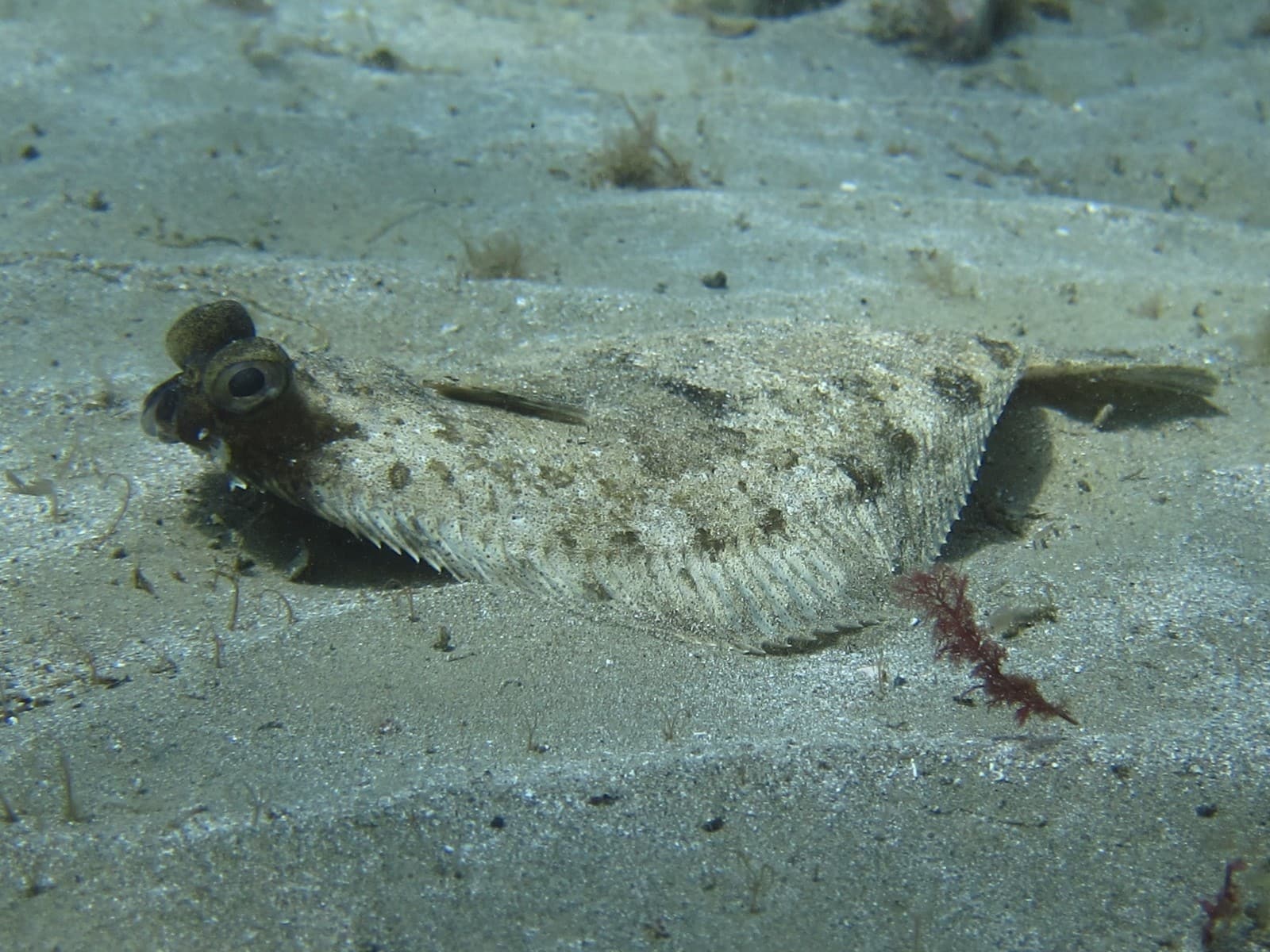
© Roban Kramer / CC BY-SA 2.0
The flounder demonstrates its masterful camouflage abilities, a characteristic adaptation that helps distinguish it from its larger cousin, the halibut. Note the mottled pattern and smaller size typical of flounder species.
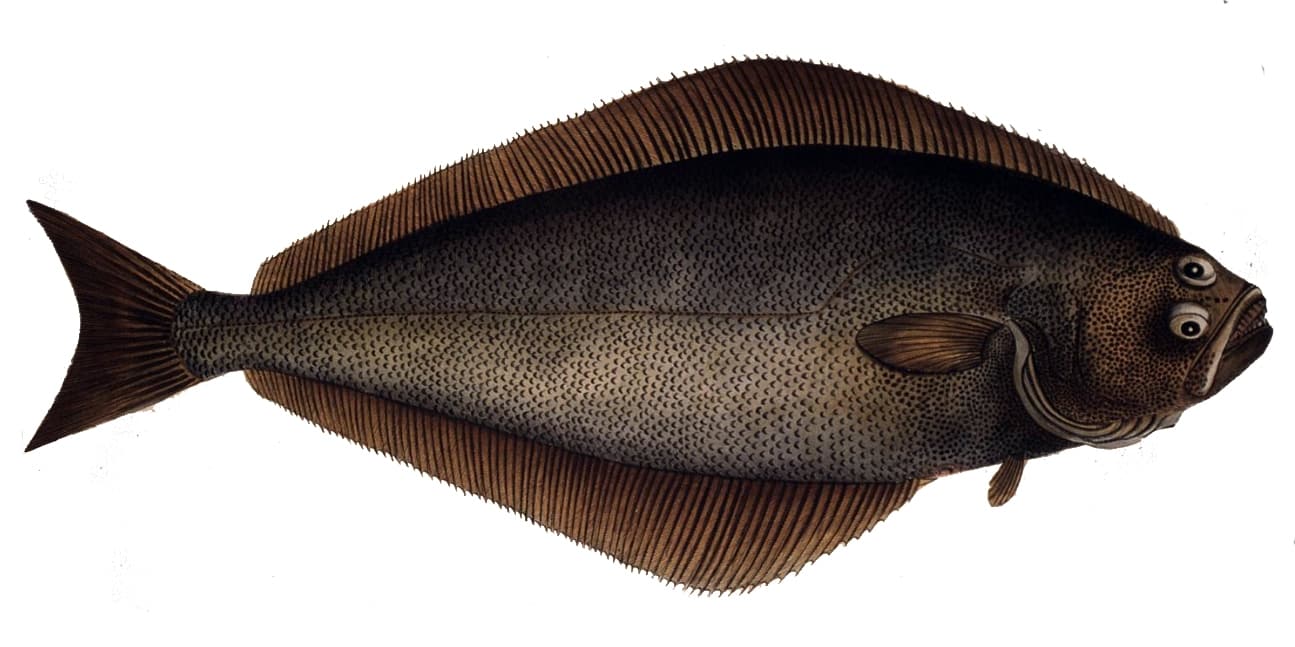
The Pacific halibut’s distinctive larger size and more uniform coloration are evident in this illustration. Notice the proportionally larger mouth, indicating its more predatory nature compared to flounder species.
Key Differences Between Flounder and Halibut
| Feature | Flounder | Halibut |
|---|---|---|
| Size | 12-36 inches (30-90 cm) | Up to 8 feet (2.4 m) |
| Weight | 1-20 pounds (0.5-9 kg) | Up to 500+ pounds (227+ kg) |
| Habitat | Coastal waters, estuaries | Deep offshore waters |
| Diet | Small fish, crustaceans | Large fish, octopus, crabs |
| Lifespan | 3-10 years | Up to 55 years |
| Texture | Delicate, flaky | Firm, dense |
Habitat and Distribution
Flounder species typically inhabit coastal waters and estuaries, ranging from depths of 20-250 feet (6-76 meters). These adaptable fish often migrate seasonally between deeper and shallower waters, following temperature changes and food availability.
Halibut, conversely, prefer the cold, deep waters of the continental shelf, commonly found at depths of 300-1,500 feet (91-457 meters). Pacific halibut range from California to Alaska, while Atlantic halibut populate waters from New England to Norway.
Hunting and Feeding Behavior
The feeding strategies of these flatfish reveal distinct evolutionary adaptations. Flounders are ambush predators, using their exceptional camouflage to blend with sandy or muddy bottoms before striking at passing prey. Their diet consists mainly of smaller fish, shrimp, and marine worms.
Halibut display more active hunting behavior, often swimming up in the water column to pursue prey. Their larger size and more powerful jaws allow them to tackle bigger prey, including cod, octopus, and even other flatfish.
Commercial Value and Culinary Differences
The culinary distinctions between flounder and halibut significantly impact their commercial value. Halibut commands premium prices due to its firm, meaty texture and mild, sweet flavor. A single large halibut can yield hundreds of pounds of valuable fillets.
Flounder meat offers a more delicate, flaky texture with a subtle, sweet taste. While generally less expensive than halibut, certain flounder species like Dover sole fetch premium prices in upscale restaurants.
Conservation Status
Pacific halibut populations remain relatively stable thanks to strict management practices, while Atlantic halibut stocks have declined significantly due to historical overfishing. Most flounder species maintain sustainable populations, though some regional stocks face pressure from commercial fishing and habitat degradation.
Size Comparison and Growth Rates
Halibut demonstrate remarkable growth potential, with females growing significantly larger than males. A 20-year-old female halibut can reach 150 pounds (68 kg), while males typically max out at around 40 pounds (18 kg).
Flounder species show more modest growth rates, with most commercial species reaching market size of 2-5 pounds (0.9-2.3 kg) within 2-3 years. The largest flounder species, the Southern flounder, rarely exceeds 20 pounds (9 kg).


